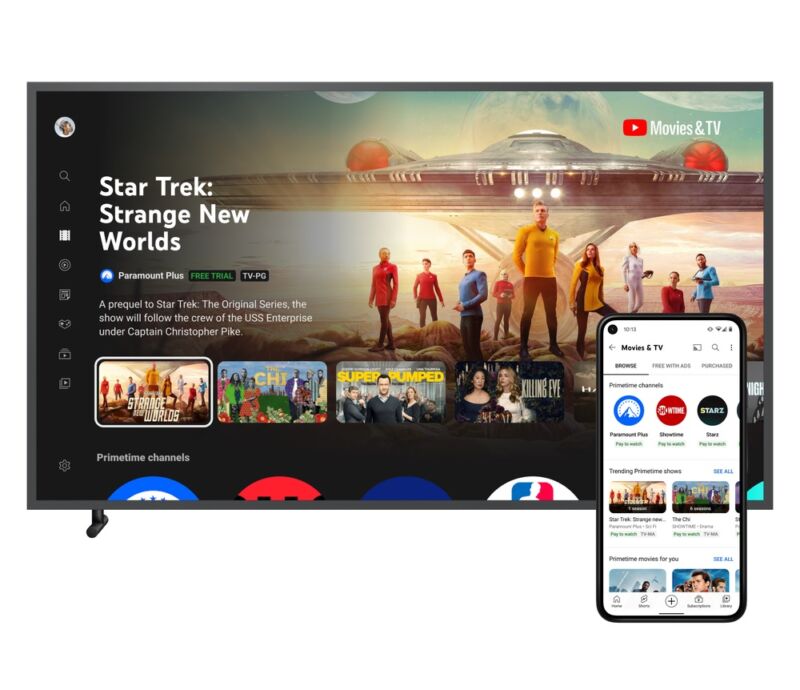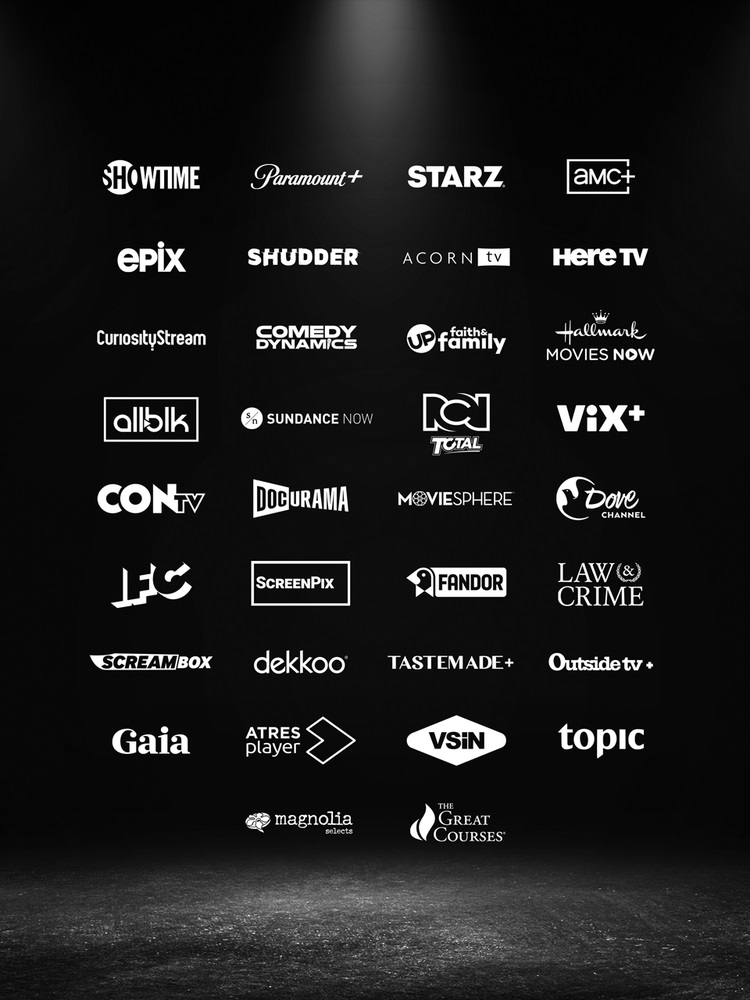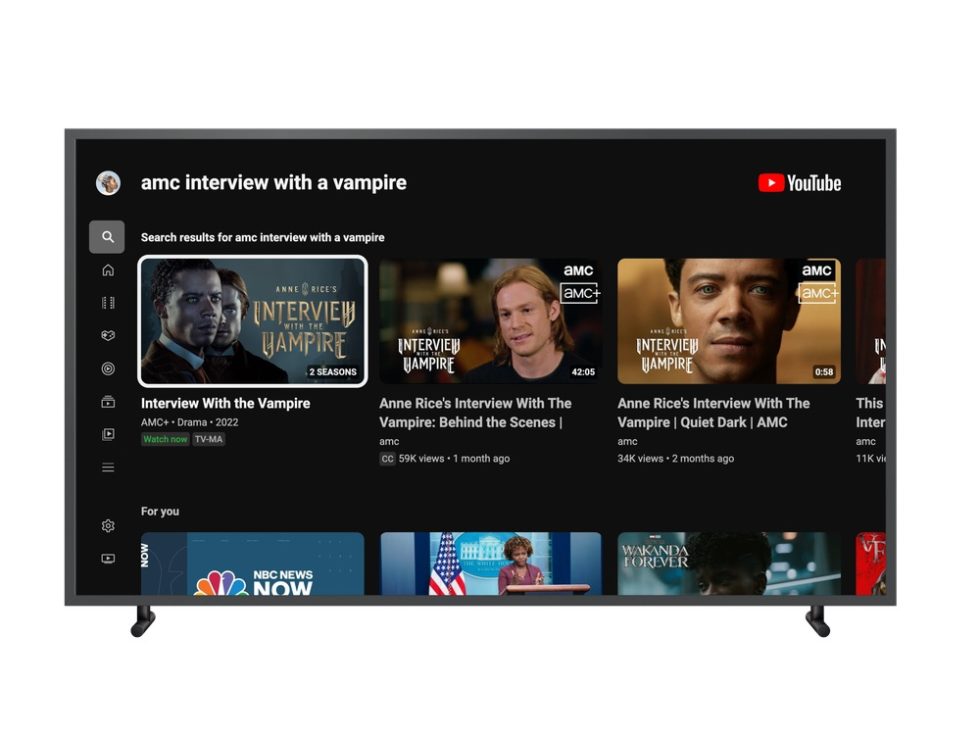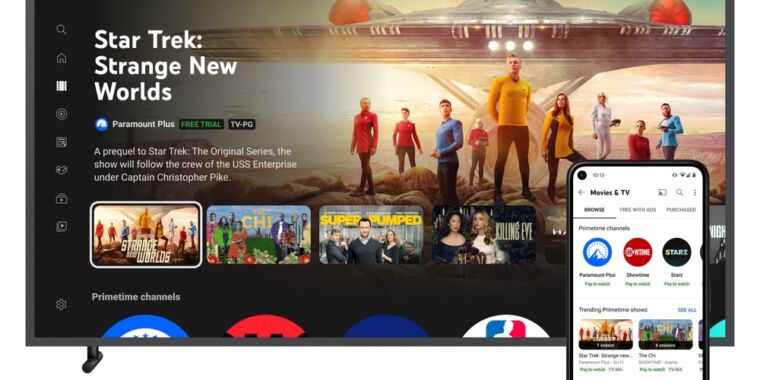
As many feared, the proliferation of streaming services has made cutting the cord feel a lot like cable TV. Not only do those cheaper monthly subscription fees start adding up, but figuring out which service has the content you want and juggling apps can feel as time-consuming and cumbersome as flipping channels. YouTube’s Primetime Channels announced today aims to change that by unifying and selling content from 34 streaming partners on YouTube.
Primetime Channels begins its rollout in the US with streaming services from partners, including AMC+, Epix, Paramount+, Starz, and Showtime, available to subscribe to and watch in YouTube’s Movies & Shows section. More streaming services, including NBA League Pass, are en route, a blog post from YouTube’s director of product management, Erin Teague, said.

The full list of Primetime Channels partners include some smaller names.
Primetime Channels content will be visible alongside any other YouTube content, including in recommendations and when searching among purchased content, Teague’s blog said. The executive told The Verge that Primetime Channels content wouldn’t get preferential treatment in recommendations or search results over other content. That means a viral video about Showtime’s Yellowjackets could rank higher than an actual episode of the series when looking at recommendations or search results. You’ll even be able to like, dislike, or comment on videos from Primetime Channels, although there will be no viewer count.
Over the last few years, brands rushed to push out their own streaming services, leaving viewers inundated with numerous subscriptions and apps. YouTube’s Primetime Channels (not to be confused with Amazon Prime Video, of course), is a sensible way to bring a lot of that paid-for content on a single platform, which is known for presenting video in a digestible, sharable, and, perhaps most importantly, binge-able format.
YouTube has strived to be a place where people watch mainstream TV shows and movies, as evidenced by its YouTube TV, which offers live viewing on cable networks. However, until now, it was unable to get enough of the right partnerships to launch a feature like Primetime Channels.

Streaming partners, meanwhile, hope to see subscription numbers improve with direct access to YouTube’s massive membership.
As The Wall Street Journal noted, YouTube saw its first annual ad sales decline last quarter, making subscription-based revenue all the more important. Despite the decrease in ad sales, WSJ reported that YouTube TV revenues are predicted to hit $9.1 billion in 2022, citing wealth manager Credit Suisse. In a statement to WSJ, Christian Oestlien, vice president of product management at YouTube, said Primetime Channels can be “as big or even bigger of an opportunity” than what YouTube TV is currently.
With Primetime Channels, YouTube is attaching another form of subscription-based revenue. WSJ reported that YouTube would evenly share revenue from Primetime Channels subscriptions and ad sales with its streaming service partners. Primetime Channels doesn’t offer any notable discounts to new subscribers of partner streaming services.
After Nielsen recently reported that streaming TV was more popular than cable for the first time in the US, it makes sense for YouTube to increase streaming efforts. According to Nielsen, YouTube (including YouTube TV) represented 7.3 percent of TV streaming in July, falling behind Netflix (8 percent) and “other” (10.2 percent).
YouTube isn’t the first service to unite streaming services. There’s Roku, for one, and Amazon Prime Video has content from AMC+, Discovery+, Starz, and Showtime, to name a few, and Verizon’s +play includes content from Disney+ and Netflix. Notably, content from some of streaming’s juggernauts, including Netflix, Disney+, and Hulu, are absent from Primetime Channels’ launch.
However, YouTube seems optimistic about extending its list of partners, making it increasingly likely that the show or movie you want to watch is accessible through YouTube.








